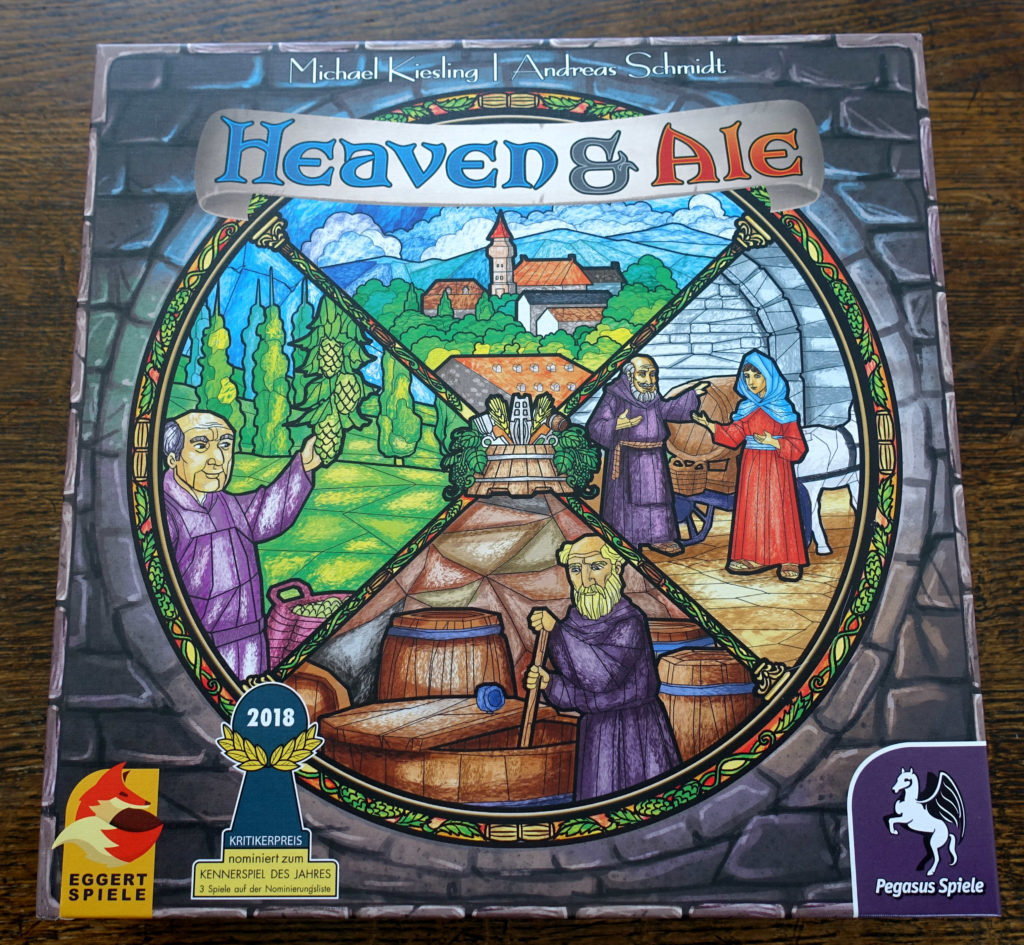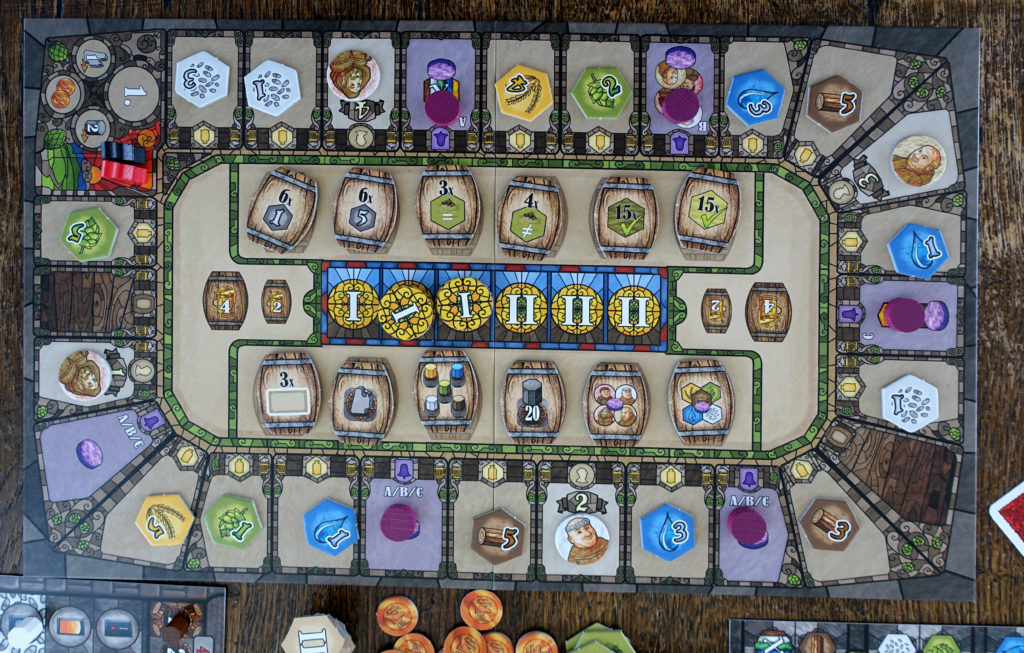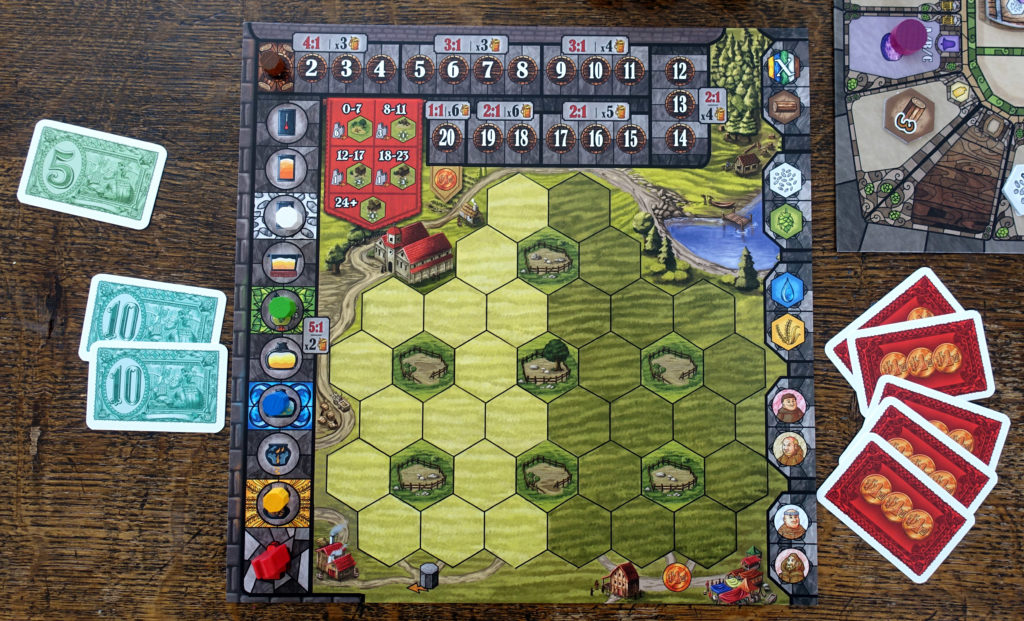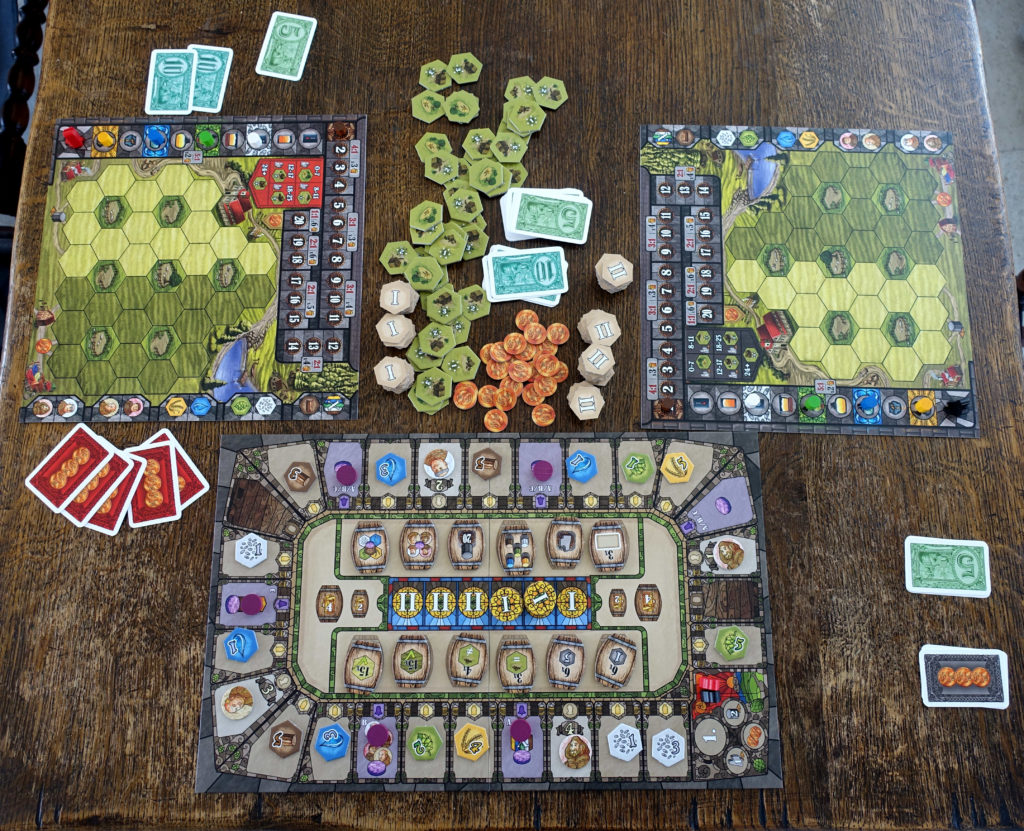Because of the Social Distancing I decided to review several board games this period, because playing a game is one of the best ways to spend your time at home! Naturally I have several games about beer and once in a post I’d like to tell more about one of them. This time it’s time for a Brain Burner:
Heaven & Ale
A brain burner? Well, I mentioned before that Brew Crafters is quite a complex game. Heaven & Ale really gets you thinking as well. It’s a strategy game and most of the information is known to you at the beginning of the game apart from some details. A brain burner is a game that really sets your brain to work. You can try to play this game without strategising, but you won’t win. There are decal different strategies at your disposal however.
Heaven & ale is a game for two to four players. According to the box it takes about one-and-a-half hour, but with two you can play it easily within the hour. The recommended age is 12 and higher and as said, it’s a fairly complex game: according to BGG a 3.54 out of 5.

In Heaven & Ale you try to get as many victory points as possible, which you will receive via several ways. The most important one is the brewing of a good beer and it’s also the most difficult one to keep track of. At the end of the game you multiply your lowest resource value with your brew master’s current victory point value. You then add points for your barrels (four for the big ones and two for the small ones) and get one point if you ended on the first player spot.
This game is too difficult to explain without copying the rule book, so I’ll try to just give you some overview. The game takes 3 rounds around the main board with 2 players, more rounds with more players. Every turn you move your player figure on the main board and buy a monk or a resource tile or take a scoring disk or take barrels, according to the space where you landed. You cannot land on a space of which you cannot perform the action because you don’t have the money or because the space is empty. When you buy a monk or a resource tile, you place them in your garden; you can buy them for the normal price if you place them on the shadowy side and double the price when you want to place them on the light side. So, money becomes tight really fast. Resource tiles move your resources when placed on the sunny side and give you money when placed on the shadowy side. Monks can activate all resource tiles and other monks next to them. Resource tiles then do what they normally do, while an activated monk moves your brew master.
Your brew master and resources begin befóre the victory point track, so you have to move them up first quite a bit to get any points at the end of the game.

You activate the resource tiles and monks by getting a scoring disk and place it on proper space on the right side of the board. When you have activated two spaces that belong together, you may play a privilege cards that gives you bonuses. When you have filled all the spaces around a barn space, you may get a barn which gives you extra activations. When you land on a barrel space you may take all the barrels of which you have reached the winning condition, like filled up the shadow side of your land, reached the first point giving space with all your resources or have three barns of the same value.

After three rounds you get a chance to move your lowest resource up by two clever mechanisms and then you count points
Ok, reading back what I just wrote the game seems dry and boring, but I actually really liked it. There’s definitely some thinking and counting and puzzling going on, but the game plays pretty fast (unless you are prone to analysis paralysis, this game would definitely trigger that) and it’s a nice puzzle to occupy your brain with. It doesn’t have a lot to do with beer per se, it could have had any theme, and it is very lightly pasted on, but it works. At least it stays true to the theme, no weird constructions to let the theme fit the mechanics of the game nor the other way around. The artwork is gorgeous and the material is nice and sturdy (except for the player boards, but that’s ok). It will take several games to really understand the game and then some, but that makes it all the more attractive. Every time I try a new strategy and I’m certainly not bored yet!
Would I recommend this game? Well, not for everyone. It’s definitely a gamer’s game and it is of the dry, counting eurogame persuasion, so maybe not the best choice if you actually wanted to crawl in some dungeons. It also has a fair bit of rules. But most of all, you have to strategise. If you like math challenges though, and if you are looking for some serious brain burning and puzzling, and are not scared away of a game you maybe will not understand completely the first time you play it, I’d say, go for it!
What would you rather play? A game with an immersive theme but poor gameplay, or a solidly designed game with a pasted on theme?



